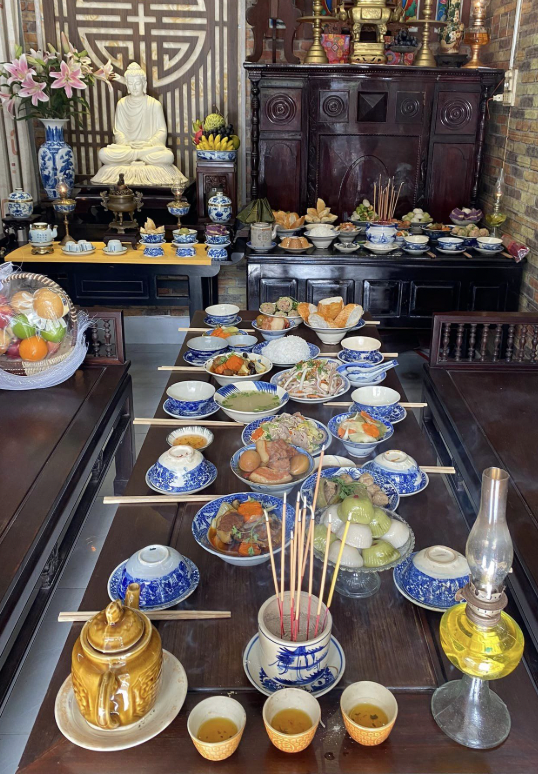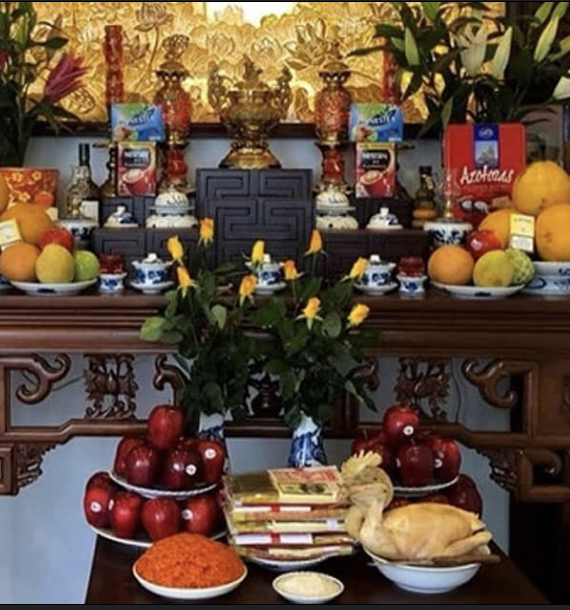
A traditional Vietnamese worship setting prepared for a major ritual. The offering includes a full spread of cooked dishes, fruits, rice, and tea—arranged in sets of three and placed before a family altar. After the incense is lit, the spiritual essence of the meal is believed to be received by the ancestors.
